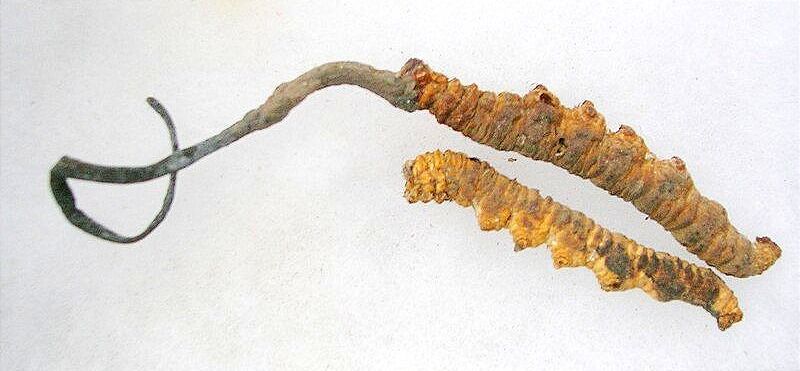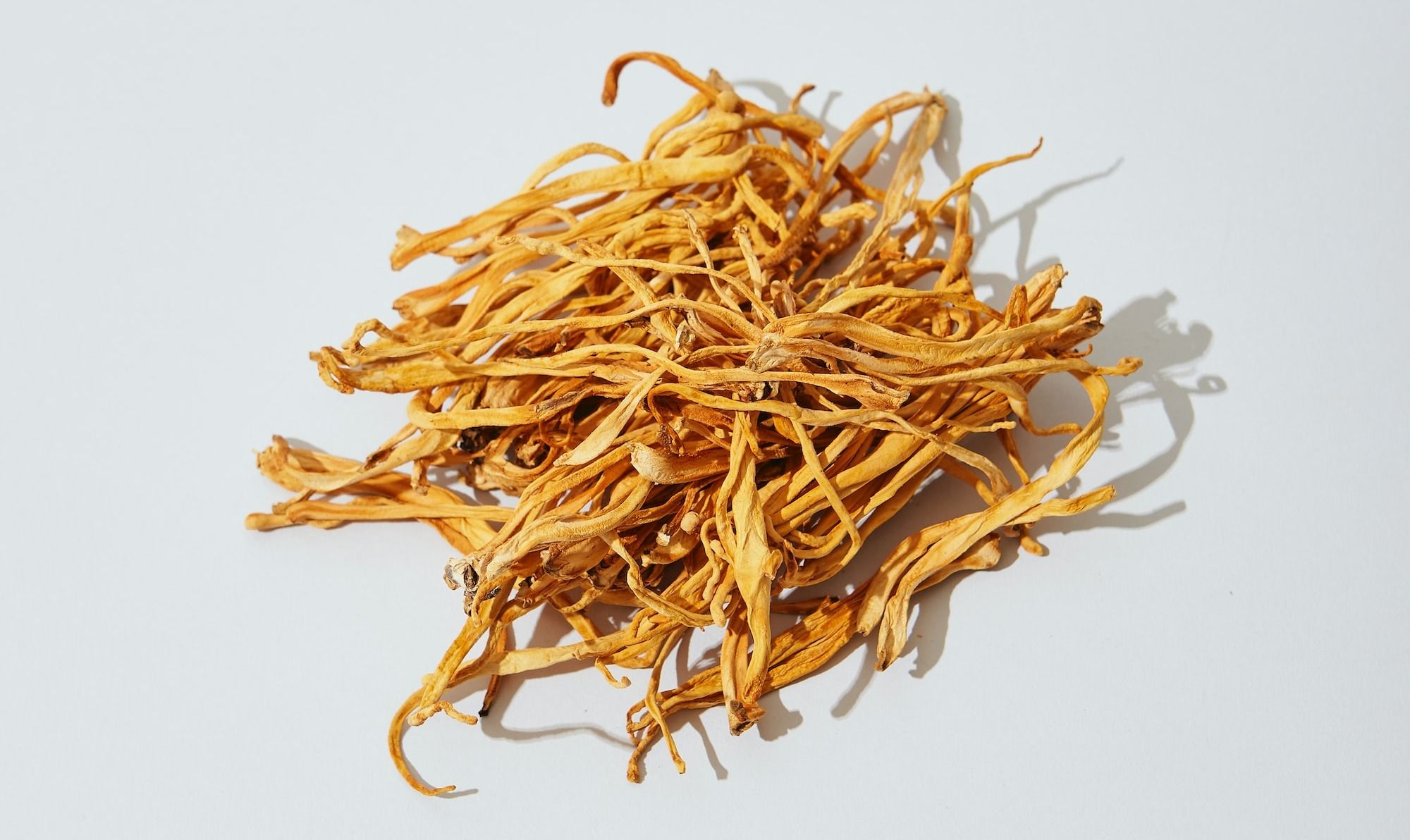Caterpillar Fungus Cordyceps: The World's Priciest Fungi Explained
The Caterpillar Fungus, hailed as the world's most expensive fungi with its deep-rooted history, melds luxury with tradition. Its esteemed value is recognized by many aficionados, yet it teeters on the brink of extinction.

The priciest fungus globally isn't the famed truffle or the sought-after Matsutake mushroom. Instead, it's a unique caterpillar fungus native to the Himalayan region.
This rare delicacy commands a staggering price of over $60,000 per pound, dwarfing the top-tier truffles that fetch up to $8,000 per pound.
Historically esteemed in traditional Chinese medicine, cordyceps has seen a resurgence in modern appeal. In contemporary hubs like Beijing, its worth astonishingly surpasses three times its weight in gold.
Yet, this treasured fungus faces the looming threat of extinction.
What is Caterpillar Fungus?
Ophiocordyceps sinensis, commonly referred to as cordyceps, Caterpillar Fungus, or "yartsa gunbu," is a distinct parasitic fungus that has a remarkable affinity for insect larvae.
When this fungus invades the larvae, it triggers a mummification sequence, and in a captivating twist of nature, the fungus sprouts prominently from the insect's head.
These fungi predominantly thrive in the vast grasslands of the Tibetan plateau and the Himalayan heights, spreading across countries such as Nepal, Bhutan, and certain Chinese regions.
History and Origin
Originating thousands of years ago, the Caterpillar Fungus has deep roots in Tibetan and Chinese traditional medicines.
It was celebrated for its supposed properties of boosting energy, appetite, stamina, and libido.
Once a luxury cherished by the elite, its prominence skyrocketed in 1993 when Chinese athletes, believed to have consumed the fungus, set remarkable track records.
This, coupled with its purported protection against SARS, caused a surge in its demand. Between 1997 and 2012, its market value rose by 20% annually.
Today, it's not just a luxury for the elite but also a sought-after supplement for China's burgeoning middle class.
Though often dubbed "Himalayan Viagra" in the West, Tibetans primarily view it as a holistic health enhancer.
Some even believe in its potential anti-cancer benefits, though its high cost compared to its medicinal efficacy remains a topic of discussion.
The Cordyceps Life-Cycle
In nature's intricate ballet, certain moth larvae become prey to a unique fungus. Adult moths lay eggs in low vegetation, and as these hatch, the larvae burrow deep, staying hidden until they're ready to metamorphose.
But when infected by this predatory fungus, a chilling transformation occurs. Driven perhaps by the pain of the fungus feeding within, the larvae inch upwards.
As they approach the surface, an eerie sight emerges: a slender, dark stalk sprouts from the larva's head. Hence, the local name for this fungus is "yartsa gunbu," derived from Tibetan terms meaning "winter worm, summer grass."
In early summer, around May to June, as the Himalayan snow recedes revealing new vegetation, this event peaks. Harvesters highly value both the consumed larva and the spiraling fungus, highlighting this nature's theatrical apex.

Why is it so expensive?
Restricted Habitat
Cordyceps thrives exclusively in high-altitude terrains, specifically above 3,800 meters in the Himalayas. This makes access and harvesting arduous and perilous.
Demanding Collection Process
Procuring the fungus involves a detailed, hands-on approach. Identifying the fungus's dark stalks is challenging, as they blend seamlessly with the sedges abundant in Tibet’s high-altitude meadows.
Extracting them intact is crucial; any detachment from the caterpillar diminishes its worth. The dense turf in these regions often necessitates cutting through with a knife, making the harvest an arduous task.
Surging Demand due to Economic Shifts
According to Insider, The soaring value of cordyceps during the late 20th and early 21st century can be attributed to China's booming economy and the subsequent rise in disposable incomes, propelling a significant surge in harvesting.
In 2017, prime-quality cordyceps were sold at staggering prices, reaching up to $63,000 per pound.
Owing to its believed medicinal properties, cordyceps witnesses a soaring demand, especially in the realms of traditional medicine.
Scarcity and Existential Threats
Factors like over-collection and the repercussions of climate change have led to a diminishing supply, thereby elevating its price.
The fungus surfaces just for a few weeks period annually in isolated territories of Nepal, Tibet, India, and Bhutan, often camouflaged amidst expansive grasslands.
Despite the profits, the cordyceps trade faces existential threats. Overharvesting, acknowledged even by collectors, has been a major contributor to its decline.
Additionally, climate change poses challenges. The fungus predominantly flourishes in regions with extended, chilly winters, which are now dwindling.
Historical and Cultural Significance
For ages, it has been integral to Tibetan and Chinese traditional medicine. Conventionally, it served as an all-purpose tonic and immunity booster.
Additionally, its use transcends health; it's also a gift, bribe, or status symbol. Consequently, more aesthetically pleasing specimens command a premium.
Here's Why the Cordyceps Fungus is Disappearing
The coveted fungus is seeing a decline, influenced by various factors. Eager harvesters collect the fungus prematurely, preventing its spore release.
This not only disrupts the fungal life cycle but also affects future caterpillar infections.
Adding to this, the Himalayas have warmed since 1979, notably with Bhutan recording a 4°C increase over three decades. This warming trend results in permafrost melt and shifts in vegetation.
Thriving in cold (around -5°C) and dry regions near permafrost, the fungus's habitat is under threat. It's also worth noting that the caterpillars, essential for the fungus's survival, feed on specific plant roots.
As the fungus parasitizes the caterpillar, both entities face challenges in relocating to higher, colder areas, emphasizing the intricate balance of their relationship.
Flavor Profile
The Caterpillar Fungus is characterized by its subtle earthy flavor with hints of woodsy and herbal undertones.
Despite its neutral and slightly sweet taste, making it adaptable to various dishes, its real allure in culinary realms is less about flavor and more about its esteemed medicinal benefits and luxurious status.
Cordyceps Fusion: Blending Tradition with Global Cuisines
Cordyceps Tea: Clean cordyceps and simmer in boiling water for 20-30 minutes. Enhance the flavor with optional additions like goji berries or red dates.
Cordyceps Soup: One of the most traditional ways to consume cordyceps is in a nourishing soup. It's often combined with chicken, pork, or herbal ingredients.
Cordyceps-infused Liquor: In some parts of Asia, cordyceps are steeped in high-proof alcohol to create a medicinal tonic. This is believed to transfer the beneficial properties of the fungus to the liquor.
Cordyceps Velouté (French): Create a smooth, velvety soup by blending sautéed cordyceps with vegetables like leeks and potatoes. Finish with a splash of cream and fresh chervil.
Cordyceps Tempura (Japan): Lightly batter cleaned cordyceps and fry until golden. Serve with a dipping sauce made from soy, mirin, and a touch of wasabi.
Interesting Facts
- Gold of the Himalayas: Due to its high price, it's often referred to as the "Gold of the Himalayas."
- A Vital Livelihood: For many Tibetan and Nepali families, the annual Caterpillar Fungus harvest is the primary source of income.
- Environmental Concern: There are concerns that overharvesting may lead to ecological imbalances in its native habitats.
- Imitations: Due to its high value, there have been instances of counterfeit or fake Caterpillar Fungus in the market.
- Aphrodisiac Reputation: In traditional medicine, it's often believed to have aphrodisiac properties, which further boosts its demand.
In Summary
The Caterpillar Fungus, often considered a gold standard in luxury foods, commands its high price due to a combination of factors: its intricate harvesting process, climate change, and revered medicinal properties.
As demand has surged, especially among affluent consumers, its value has been further accentuated.
While some might question the steep price, its unique characteristics, historical significance, and the labor-intensive collection process undoubtedly make it worth its weight in gold for many enthusiasts.


